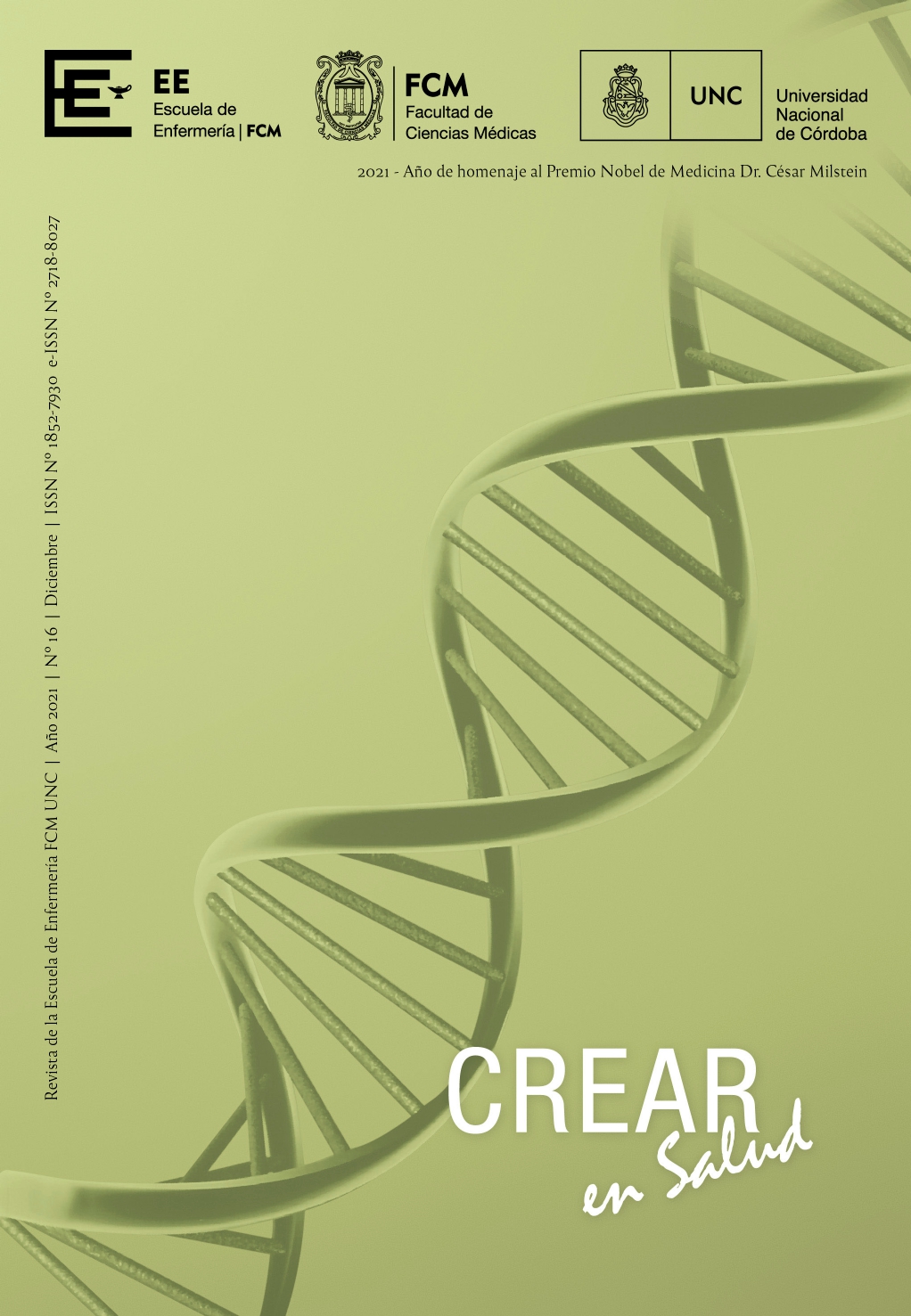Working conditions and ITS effects on health appreciations about the burnout syndrome in police officer from the province of Santiago del Estero
Keywords:
Working conditions. Health. Burnout Syndrome. Police forceAbstract
The present study seeks to explore the prevalence of the Burnout Syndrome (SBO) and its
relation to the police activity of the Santiago del Estero police personnel. The study design
was epidemiological, mixed, exploratory and descriptive observational. The target population
was composed of 444 police officers from Santiago del Estero who applied for medical leaves
during February and March of the years 2011 and 2012. The work was carried out with a
purposive sampling composed of 96 police officers who met the established criteria and who
voluntarily agreed to participate in the study. 47 of them were part of the GC and 46 of the GE.
In order to enrich the study, an exploratory cluster analysis was carried out to observe groupings
by variable that could have gone unnoticed at first and their relation to the presence or absence
of the SBO. The obtained results indicated that 10 % of them displayed the Burnout Syndrome
and presented a prevalence of mid and low risks of developing the Syndrome, a situation
that allows preventive intervention by applying measures from the healthcare perspective.
The exploration based on cluster analysis showed that the Burnout Syndrome is connected
to matters of the working environment and its conditions. These matters show the need for
institutional intervention and, particularly, those matters related to self realization, which is
related to the level of training and which requires supporting professional development in order
to encourage the instruction of policemen during their careers.
Downloads
References
REFERENCIAS
Agencia europea para la Seguridad y Salud en el Trabajo. (2005). Investigación sobre el estrés relacionado con el trabajo. Oficina de Publicaciones Oficiales de las Comunidades Europeas. https://scielo.isciii.es/scielo.php?script=sci_arttext&pid=S1578-25492015000100010
Angermeyer, M. C., y Killian, R. (2000). Modelos teóricos de Calidad de Vida en trastornos mentales. In H. Katschnig, H. Freeman, & N. Sartorious (Eds.), Calidad de vida en los trastornos mentales . Barcelona, España: Masson. https://www.scirp.org/(S(lz5mqp453edsnp55rrgjct55))/reference/ReferencesPapers.aspx?ReferenceID=232405
Alves, J. S. C., Bendassolli, P. F., & Gondim, S. M. G. (2017). Trabalho emocional e burnout: um estudo com policiais militares. Avances en Psicología Latinoamericana. https://www.redalyc.org/pdf/799/79952834004.pdf
Cherniss, C. (1980). Staff Burnout. Job Stress in the Human Service.https://doi.org/10.1177/002248718103200418 https://scholar.google.es/scholarhl=es&as_sdt=0%2C5&q=Cherniss%2C+C.+%281980%29.+Staff+Burnout.+Job+Stress+in+the+Human+service.+&btnG=
Esteve, J. (1999). El malestar docente. Buenos Aires. Paidos.
Fernández Sánchez, J.C., Pérez Mármol, J.M., Santos Ruiz, A.M., Pérez García, M., & Peralta Ramírez, M.I. (2018). Burnout y funciones ejecutivas en personal sanitario de Cuidados Paliativos: influencia del desgaste profesional sobre la toma de decisiones. Anuales del
Sistema Sanitario de Navarra. https://dx.doi.org/10.23938/assn.0308
Freudenberg. (1974). Staff Burnout. Journal Soc.https://spssi.onlinelibrary.wiley.com/doi/epdf/10.1111/j.1540-4560.1974.
tb00706.x
García Choquetopa, M. (2016). El Síndrome de Burnout y desempeño laboral en policías de la Unidad de Solución Temprana de la FELCC de la ciudad de La Paz. [Tesis de grado]. Universidad Mayor de San Andrés. https://repositorio.umsa.bo/xmlui/bitstream/handle/123456789/8356/GCHM.pdf?sequence=1&isAllowed=y
Gil Monte, P. R. (2003). Burnout syndrome: ¿síndrome de quemarse por el trabajo, desgaste profesional, estrés laboral o enfermedad de Tomás?. Revista de Psicología del Trabajo y de las Organizaciones. https://www.redalyc.org/pdf/2313/231318052004.pdf
Maslach, C., & Jackson, S. (1981). The measurement of experienced burnout. Journal of occupational behaviour.https://onlinelibrary.wiley.com/doi/epdf/10.1002/job.4030020205
Maslach, C., y Jackson, S. E. (1997). MBI-Inventario “Burnout” de Maslach. Madrid: TEA.http://catalogosuba.sisbi.uba.ar/vufind/Record/KOHA-OAI-APS:11352/Details
Montoya Zuluaga, P., y Moreno Moreno, S. (2012). Relación entre el síndrome de burnout, estrategias de afrontamiento y engagement. Psicología desde el Caribe.https://www.redalyc.org/pdf/213/21323171011.pdf
Samaja, J., & Galende, E. (2009). Epidemiologia de la salud: reproducción social, subjetividad y transdisciplina. Buenos Aires. Argentina.http://www.bibliopsi.org/docs/carreras/terapiaocupacional/METODOLOGIA%20DE%20LA%20INVESTIGACION%20Y%20ESTADISTICA/Epistemologia%20y%20metodologia,%20SAMAJA,%20J..pdf
Vélez Arango, A. L. (2007). Nuevas dimensiones del concepto de salud: el derecho a la salud en el estado social de derecho. Revista Hacia la Promoción de la Salud. http://www.scielo.org.co/pdf/hpsal/v12n1/v12n1a05.pd
Downloads
Published
How to Cite
Issue
Section
License
Copyright (c) 2022 Crear en Salud

This work is licensed under a Creative Commons Attribution-NonCommercial 4.0 International License.



